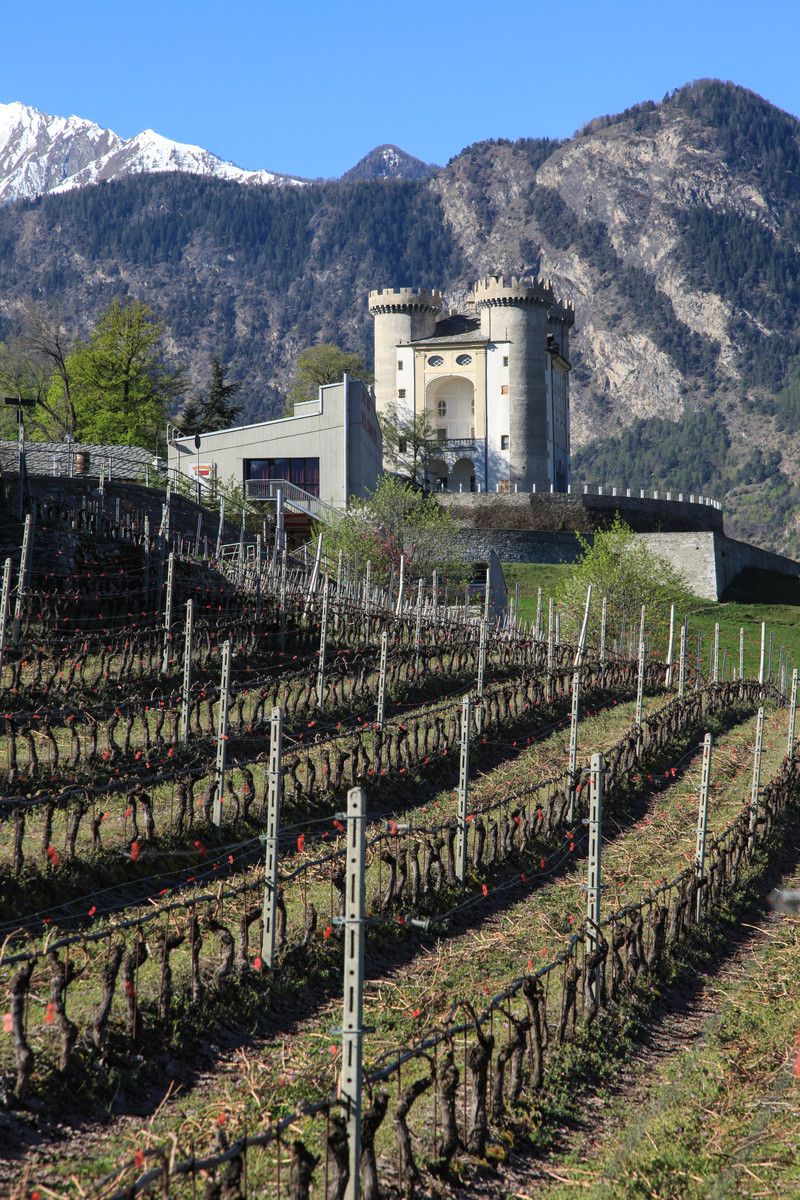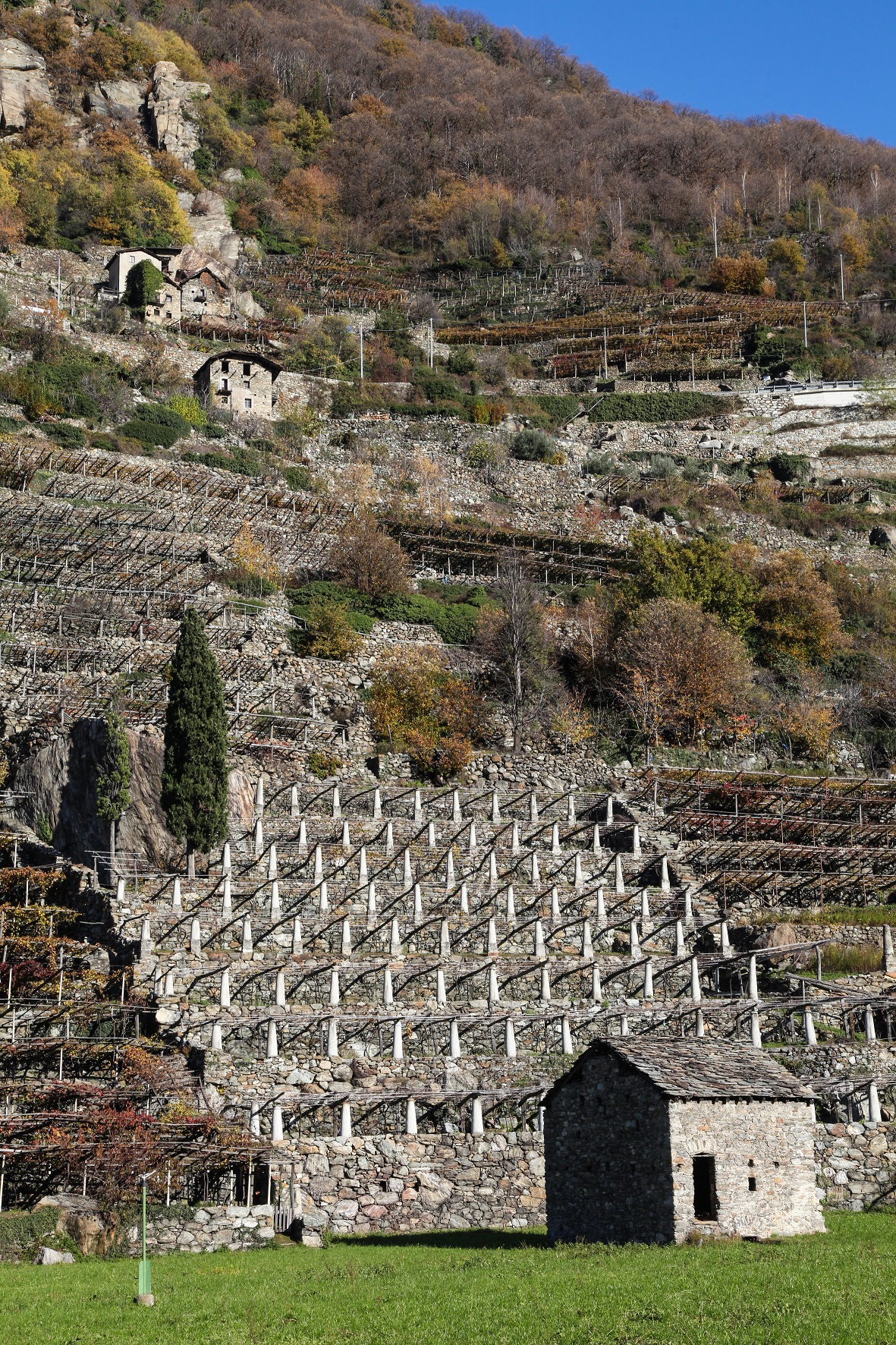The Valdôtain viticulture is definitely a heroic one
Visitors will have the chance of discovering its traditions while appreciating the quality rewards given to local productions, which are the result of experiments, importations, risky choices and natural selections. All this guarantees many local and autochthonous varieties and, thus, some prestigious wines, which are well-known all around the world.
Valdôtain wines are all affiliated under a unique AC, the so-called Denominazione di Origine Controllata Valle d’Aosta – Vallée d’Aoste, which is then declined in 7 area appellations (Blanc de Morgex et de la Salle, Enfer d’Arvier, Torrette, Nus, Chambave, Arnad-Montjovet and Donnas) and 15 species of vine (Chardonnay, Cornalin, Fumin, Gamay, Mayolet, Merlot, Müller Thurgau, Nebbiolo, Petite Arvine, Petit Rouge, Pinot Blanc, Pinot Gris, Pinot Noir, Prëmetta and Syrah).




